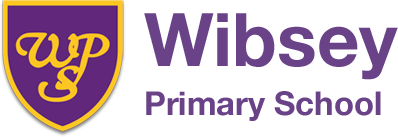Building Learning Power
Here at Wibsey Primary School we are on a journey to grow our ‘Learning Power’. Put simply, we are learning to be better learners.
Lifelong learning and the promotion and development of independent learners is a key objective for all schools.
In our school we follow Professor Guy Claxton’s work on Building Learning Power (BLP) as part of our spiral curriculum. Guy Claxton’s work suggests that there are four key learning dispositions
– Resilience, Resourcefulness, Reflectiveness and Reciprocity, – The four R’s of learning. Each of the four R’s is made up of a number of areas of learning which we call muscles.
We teach the children all about these skills and learning muscles and how that just as we can build our physical muscles with the right kinds of exercise. As well as how we can also exercise our learning muscles to develop their strength and stamina.
We use BLP to develop what we call ‘The Language for Learning’ in school. This enables us to engage all our pupils in a dialogue using a common language to support and develop their understanding of how we learn. The children explicitly use the language for learning to explain ways in which they have achieved or approached tasks and how they can move on to the next chapter in their learning.
Within this area of the website. we would like to make you aware of the language we use and will show you a wide variety of work throughout school that has been carried out so that you can discuss and support your child’s learning at home as well as use the common language we do.
Resilience
The key elements of this disposition are Perseverance, Noticing, Managing Distractions and Absorption.
The children learn how to stay “locked onto their learning,” the importance of “never giving up” and the benefits of learning when “getting un-stuck.”
Resourcefulness
The key elements of this are disposition Questioning, Capitalising, Making Links, Reasoning and Imagining.
Throughout their time at Wibsey Primary School the children will develop their ability to ask and answer questions; use resources around them to help them with their learning; make links between the different areas of their learning and of course use their imaginations!
Reflectiveness
The key elements of this disposition are Planning, Meta-learning, Distilling and Revising.
The children are always learning how and why they learn and will be encouraged to regularly look back on their learning to see whether they have met their targets and objectives. They are asked to think about future targets and areas for improvement at an age appropriate level.
Reciprocity
The key elements of this disposition are Imitation, Interdependence, Empathy and Listening and Collaboration.
The children are learning how, why and when it is best to learn on their own, with a partner or within a group whilst developing the skills they need to be a valued member of a team and learning community.
We hope that this information will give you a flavour of Building Learning Power at Wibsey Primary School.
“Since the start of the academic year across five weeks we have been using music in whole class lessons across all years at Wibsey to coincide with the use of BLP. It really has been an education as a visitor to see how pupils have addressed the various BLP muscles that they are being encouraged to use by the teachers. During and after lessons the pupils are able to show us what particular muscles they have been using, particularly managing distractions, perseverance, collaborating, listening, planning, imitation and inter-dependence. It has also helped to show me as a visitor how BLP is used as a positive framework for the benefit of all pupils involved.”
Sean Howe – Music therapist, Bradford Music and Arts service
Year 5 BLP afternoon – ‘Can you make a bag?’
